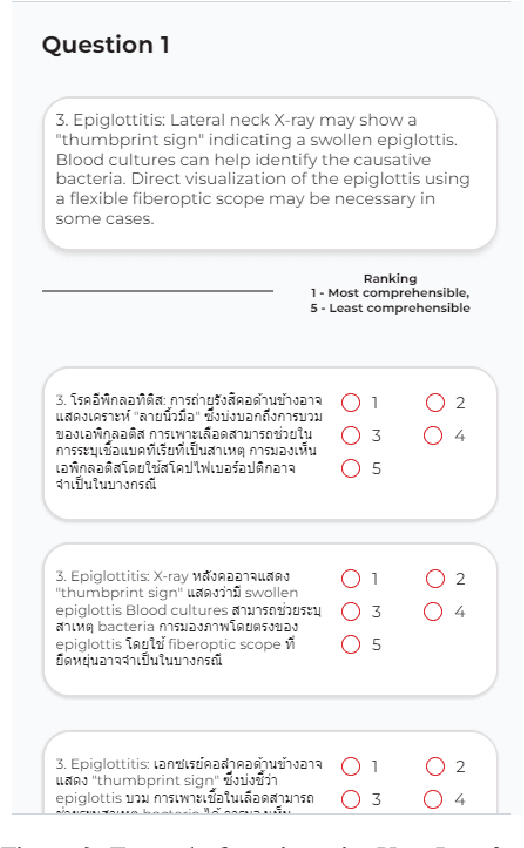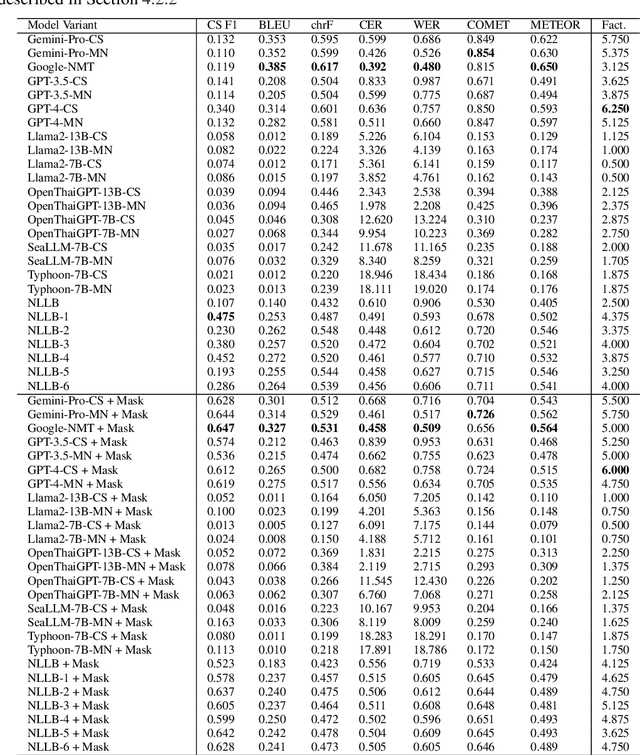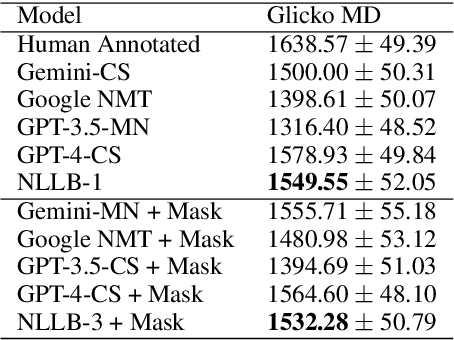Chiraphat Boonnag
On Creating an English-Thai Code-switched Machine Translation in Medical Domain
Oct 21, 2024



Abstract:Machine translation (MT) in the medical domain plays a pivotal role in enhancing healthcare quality and disseminating medical knowledge. Despite advancements in English-Thai MT technology, common MT approaches often underperform in the medical field due to their inability to precisely translate medical terminologies. Our research prioritizes not merely improving translation accuracy but also maintaining medical terminology in English within the translated text through code-switched (CS) translation. We developed a method to produce CS medical translation data, fine-tuned a CS translation model with this data, and evaluated its performance against strong baselines, such as Google Neural Machine Translation (NMT) and GPT-3.5/GPT-4. Our model demonstrated competitive performance in automatic metrics and was highly favored in human preference evaluations. Our evaluation result also shows that medical professionals significantly prefer CS translations that maintain critical English terms accurately, even if it slightly compromises fluency. Our code and test set are publicly available https://github.com/preceptorai-org/NLLB_CS_EM_NLP2024.
PACMAN: a framework for pulse oximeter digit detection and reading in a low-resource setting
Dec 09, 2022Abstract:In light of the COVID-19 pandemic, patients were required to manually input their daily oxygen saturation (SpO2) and pulse rate (PR) values into a health monitoring system-unfortunately, such a process trend to be an error in typing. Several studies attempted to detect the physiological value from the captured image using optical character recognition (OCR). However, the technology has limited availability with high cost. Thus, this study aimed to propose a novel framework called PACMAN (Pandemic Accelerated Human-Machine Collaboration) with a low-resource deep learning-based computer vision. We compared state-of-the-art object detection algorithms (scaled YOLOv4, YOLOv5, and YOLOR), including the commercial OCR tools for digit recognition on the captured images from pulse oximeter display. All images were derived from crowdsourced data collection with varying quality and alignment. YOLOv5 was the best-performing model against the given model comparison across all datasets, notably the correctly orientated image dataset. We further improved the model performance with the digits auto-orientation algorithm and applied a clustering algorithm to extract SpO2 and PR values. The accuracy performance of YOLOv5 with the implementations was approximately 81.0-89.5%, which was enhanced compared to without any additional implementation. Accordingly, this study highlighted the completion of PACMAN framework to detect and read digits in real-world datasets. The proposed framework has been currently integrated into the patient monitoring system utilized by hospitals nationwide.
 Add to Chrome
Add to Chrome Add to Firefox
Add to Firefox Add to Edge
Add to Edge